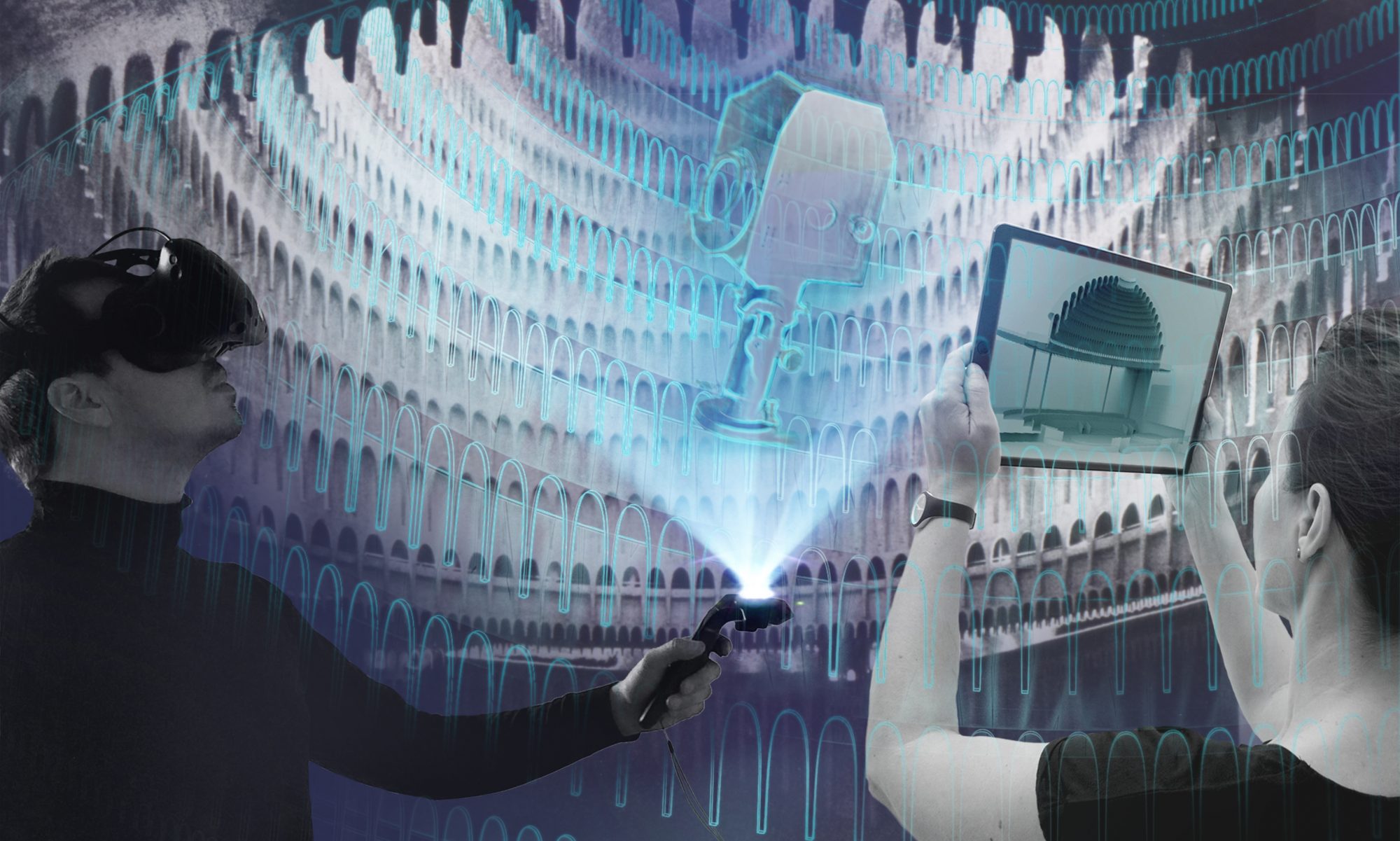Complex building projects, new buildings and renovation projects for theatres and cultural venues bring great communicative challenges for all involved. Not everyone is trained to read floor plans and many find it difficult to translate a plan drawing into a three-dimensional image. To what extent can digital technologies such as augmented reality be used to support communication on models, on drawings and in real space and to present complex architectural transformation processes in a comprehensible way?
Together with the Luisenburg Festspiele in Wunsiedel we outlined an easy-to-use, „augmented“ presentation format: Using a tablet, smartphone or AR glasses, users can present three-dimensional content on a drawn floor plan or a physical terrain model, for example the current planning status or variants of a stage design. The physical-real objects serve as anchor points for the overlay of digital three-dimensional content. The presentations can be prepared in advance by the presenters and contain a wide range of information. Similar to the slides of a PowerPoint presentation, the presenter and viewer can then click through the different 3D models. The developed application consists of two related components: On the one hand, this is the WebXR editor, in which the „slides“ are compiled and prepared, and on the other hand, the WebXR viewer, which can be called up online to display the presentation. This browser-based and device-independent use allows the same content to be played out in different ways.
- The WebXR editor, where the “slides” are compiled and prepared.
- The WebXR viewer, which can be accessed online to display the presentation.
Both applications were designed in such a way that they are not only specific to this subject area, but can also be transferred to other areas: Thus, with this application, we were able to develop parallel adaptations for the topics „Augmented Reality in Event Technology“ and „Digital Twins of Theatre Technology History“.
The technical basis for the application is the new WebXR standard, which allows three-dimensional content to be displayed on a wide variety of devices, whereby the type of display depends on the technical capabilities of the hardware. This browser-based and device-independent use allows the same content to be played out in different ways.
Open source code on Github
WebXR editor (backend): https://github.com/digitaldthg/Web-XR-Editor-Backend
WebXR viewer (presenter): https://github.com/digitaldthg/Web-XR-Editor-Presenter
Link to the project
https://digital.dthg.de/en/projects/mixed-reality
WHAT HAPPENS NEXT?
Even though the development of the platform within the research project has been completed, the servers will remain online for the time being and our cooperation partners and the digital.DTHG team can continue to work with the application and gain important experience. We also discuss further questions with external stakeholders and outline further use scenarios. Such use cases include, for example, interactive presentations with school classes (for example for theatre education), site and building overviews for the safety briefing of new staff or also the communication of tourist information for an interested public (for example in the outdoor area of a venue).
This leads to an extension of the desired functionality, for example, an option for georeferenced tracking is needed for outdoor use. The development of new applications also expands the circle of possible users. This shows that a further development of the application is also interesting for actors outside the theatre landscape and that independent and usable products and communication tools can be created on the basis of the prototypes.


